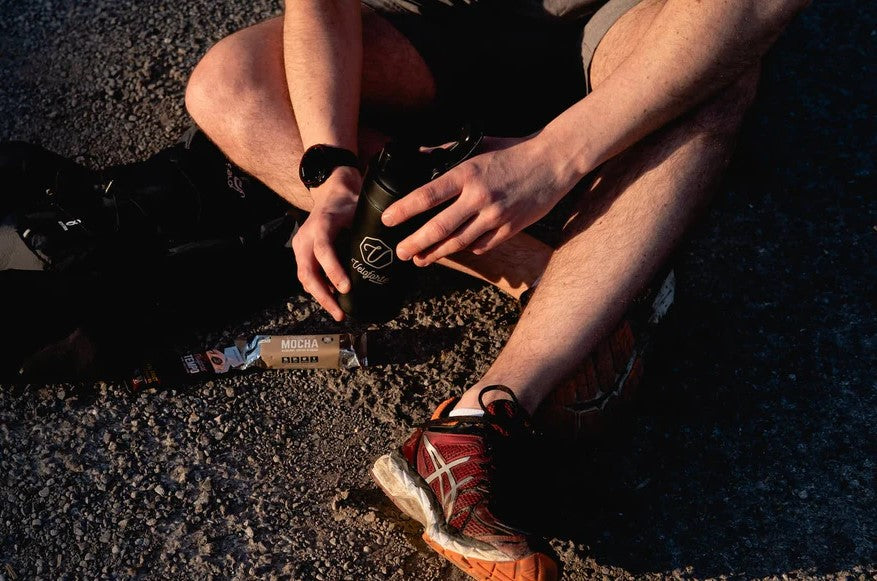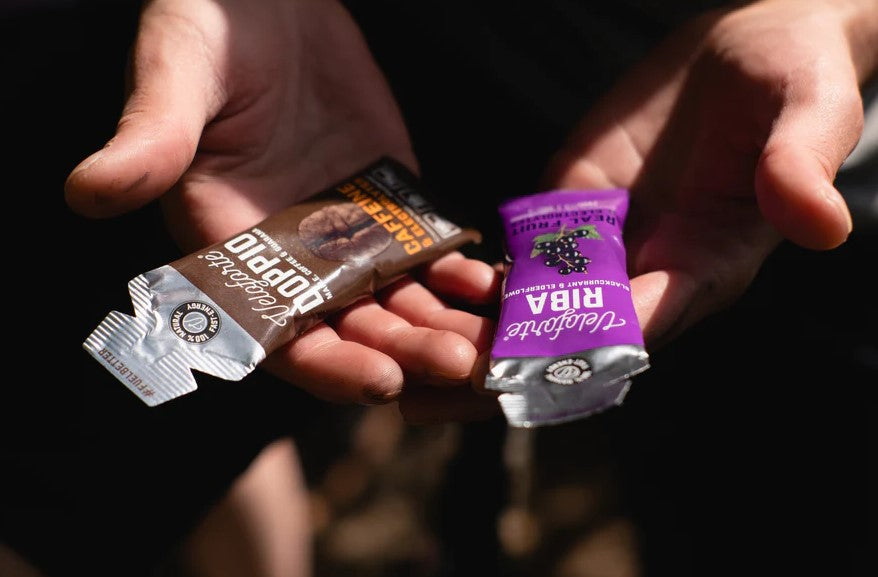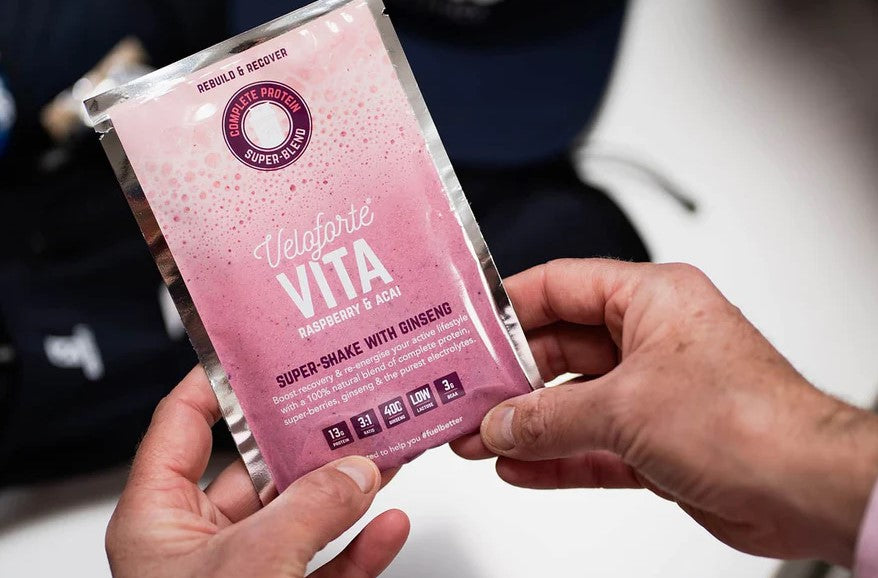8 Running Recovery Tips to Help You Recover Quickly

It’s easy to think you earn those fitness gains while you’re sweating. But that’s only part of the puzzle. Yes, you need that hilly 10km slog or lung-burning interval track session to trigger the improvements, but it’s actually during recovery where the real magic happens.
Recovery is when our bodies build back stronger, repairing damage done while training and fortifying the foundations. It’s during recovery that our system adapts and improves, to be better prepared for the next time we attempt the same effort.
If you really want to bag faster times, clock longer distances or make your regular run feel easier, it’s important to give recovery the same attention as your runs.
Our rapid guide to running recovery has all the running recovery tips you need to help you bounce back faster and stronger. And hopefully keep you off the physio’s table.
Download the ebook above.
Why recovery is so important in running
“Recovery is as important as training and one of the biggest mistakes many runners make is prioritising workouts over rest, not giving the body enough time to rebuild,” says ultrarunner Kieran Alger, a Top 100 finisher at the Marathon des Sables, a 250km, six day self-supported race across the Sahara desert.

Kieran has also run the 190 miles of the Thames from source to sea in three days and completed seven solo marathons in seven days. Along the way he’s picked up plenty of long run recovery tips.
When you run, you put your body under cardiovascular and muscular stress. With each step you’re causing tiny amounts of tissue damage to your muscles. During recovery those damaged muscles repair, adapt and grow stronger as the body flexes its natural resilience. It’s why the same workout (hopefully) feels easier next time.
“To train for and complete challenges like the MDS and running the Thames, I had to learn that a good recovery plan is a superpower,” says Kieran.
“If you neglect rest and recovery during training, you’ll not only buffer your own progress, you’ll also store up problems down the line, putting yourself at risk of illness, injury and the more serious over-training syndrome. It’s also a fast ticket to killing your running mojo.”
The tricky thing about recovery is knowing how much you need and when you need it. While rest days are essential for all runners, scheduling them in is highly personal with a huge range of factors at play including age, physiology, fitness, your training goals and schedule — not to mention sleep habits, diet and all the outside stressors of daily life.

“It can be hard to decipher when you’re suffering from a bit of CBA – a lack of motivation to get the training done – as opposed to genuine tiredness that suggests you need more rest,” says Kieran.
“Particularly when training plans are sometimes deliberately designed to compound the training stress too. Building a strong relationship with an experienced coach can really help, otherwise it takes time to learn how to tune into your body and understand the signals. But the first step is to start listening.”
Kieran recommends keeping a simple training journal to help you monitor the ebb and flow.
“I have a little notepad I keep where I have breakfast. Every morning I make a note of how I feel alongside the training I’ve done. Did I sleep well? Do I feel mentally energised? How’s my muscle soreness? Over time you get better at spotting the days when it’s time to dial things back.”
Luckily the body offers up some helpful signs that you may need extra rest as well:
- An elevated heart rate or big fluctuations in your Heart Rate Variability
- Feeling mentally tired
- Not being able to hit your training goals
“Technology can also be a guide. Many running watches and wearables now offer some form of training load recommendations and ‘readiness’ scores,” says Kieran. “But it’s important to use these with a healthy dose of caution rather than letting them rule your training. They’re not always 100% accurate and serve best as a trigger to ask yourself how you feel.”
Nutrition’s role in running recovery
Nutrition plays an important role in recovery. Without the right nutrients your body can’t build back stronger. If you’re wondering when and what to eat after a run, here are some simple things you can do to ensure you give your body what it needs for a rapid recovery.
Fuel your recovery on the run: We tend to focus our running nutrition around fuelling for the finish line. But it pays to choose sources of energy that also pack vital nutrients that support recovery.
Veloforte’s gels and energy bars deliver delicious energy fast but they also contain antioxidants that support your system long after you’ve collected your finisher’s medal.

Enjoy a protein recovery drink: A protein shake is a quick way to deliver protein to rebuild muscles. Veloforte's Cappo shake gives a delicious dose of protein as well as soothing anti-inflammatories.
After longer or more intense efforts you also need to replenish your glycogen (energy) stores. Veloforte’s Vita and Nova recovery shakes have the optimal ratio of carbs to protein to help replace depleted glycogen and speed up the supply of protein rebuilding blocks to your muscles.

Focus on good hydration: When you run, you lose fluids and electrolytes through sweat. You need to replace both to give your body the best chance for a speedy recovery. Aim to replace 150% of fluid lost through sweat one-to-four hours after your run as well as electrolytes.
You’ll find everything you need in Veloforte’s hydration powders. Our Solo mix is the best choice for supporting your body day-to-day.

Running recovery tips
- Go easy on the final stretch
- Get some active recovery
- Prioritise good sleep
- Hit the water
- Dress to compress
- Self massage
- Eat right
- Take a breath
1. Go easy on the final stretch
“When I first started running I always gave in to the temptation to sprint the last stretch of my runs,” says Kieran. “But now, I always drop the intensity and finish the final 5-10 minutes at a recovery pace. After an interval session this might be a deliberate warm down, during tempo runs, I just drop effort 10 minutes from home.”
Flicking to active recovery mode helps begin the process of flushing the metabolic waste from the muscles.
2. Get some active recovery
Getting your body moving at an extremely low intensity for active recovery sessions is also a powerful tool that helps increase blood circulation and flush out waste.
“I use this a lot, particularly after marathons or ultras,” says Kieran. “The temptation to hit the sofa and not move is strong, even sitting down straight as soon as you can after crossing the finish line. But I find keeping moving slowly, even immediately after 100km ultra, or a light stroll in the afternoon and the next day, works wonders for easing tightness and fending off DOMS.”

3. Prioritise good sleep
Sleep is the foundation of good recovery. It’s during sleep that your brain and body go into restoration overdrive. The NHS recommends 6-9 hours per night for adults and while this is also personal, if you’re training hard you should aim for the upper end of that.
“I now prioritise sleep by doing two simple things. Going to bed at consistent times and getting out of bed at the same time every day, within 5 minutes of waking up. This has had the biggest impact on my sleep quality and it gives me the bedrock on which to build my tough training schedules,” says Kieran.
4. Hit the water
You can also take your active recovery to the pool to boost your post run recovery. “This was something I picked up from England football team coaches during a visit to the St George’s training ground,” says Kieran.
“The coaches get players to do a series of aqua jogging drills and dynamic stretches – like high knees, heel flicks or even lunges – in the water. The water pressure helps increase blood flow while being under water means all your movement are supported, putting less strain on already tired muscles and joints

5. Dress to compress
Compression is a common theme in running recovery and there are a whole range of products to provide it. From compression tights, to fancy compression boots, it all follows one basic principle: using constriction to increase the blood flow to key parts of the body, mainly the legs, helping to flush waste faster.
“During the 190 mile Thames run, I wore compression calf sleeves during the run to reduce the micro-tears in the muscles. I also slept in compression tights afterwards to help promote the blood flow and waste clearance,” says Kieran.
“More recently, while running seven marathons in seven days, I used Therabody Jetboots compression boots. These work a little like blood pressure cuffs, applying gradual compression from the foot up the the whole leg. They’re excellent for reducing stiffness, improving mobility and fighting DOMS.”
6. Self massage
Spending 10-15 minutes daily enjoying (we use that word loosely when it comes to foam rollers) a spot of self massage can work wonders. Massage guns and foam rollers offer more targeted relief to tight muscles and sore sports.
“The aim here is consistency. Don’t just do this when something starts to feel ouchy,” says Kieran. “Do it regularly. After all, the best cure is prevention.”

7. Eat right
Nutrition is an important recovery tool. After a long or tough run, taking on carbs to replace the energy lost during exercise boosts your glycogen stores, while protein will help repair muscles and muscle soreness.
The best time to start your refuelling is within 30 minutes of exercise. If you can’t face a full meal, grab something quick and easy like the Veloforte Forza bar, which contains the perfect 3:1 carbohydrate to protein ratio for optimal recovery, or one of the naturally delicious Veloforte recovery shakes.
But it doesn’t stop there, says Kieran. “I’m constantly thinking about how I’m fuelling my body for performance and recovery, particularly during a big challenge. That means focusing on real food that’s nutrient-dense for all my main meals. When you’re putting your body on the line and it responds, I find it pays to reward it with what it really needs.”
A low-carb, high-protein shake like Cappo is a super quick and delicious way to help you hit your daily protein goals, even on a rest day.
If you want some help with race-specific recovery, check out our guides to post-marathon recovery and running nutrition.

8. Take a breath
When you run, you put your body under stress that triggers an automatic physiological response from your nervous system, kicking it into a fight or flight mode. This is great for running away from lions and finding the energy to clock a new PB. It’s not good for recovery.
For recovery to begin, you need to switch back to parasympathetic mode. The faster you can do this the better and guided breathing is a great tool for this, says Kieran.
“During intense interval sessions I use guided breathing to get my heart rate down as quickly as possible, maximising my recovery time before the next rep.
“I’ve also used breathing at aid stations during ultra runs. It’s amazing how five minutes of focusing on your breathing can make you feel more ready to put another 15 miles in your legs.
“Most running watches now have guided breathing apps, or you can just sit still and focus on big deep, slow breaths. Prioritise nasal breathing and try to widen the focus of your vision to make it more effective, too. Nose breathing and a wider field of vision are both signals to the body that you’re in a calm state.”

Stock up to support your running recovery
Now that you’ve got some new tricks to help with your running recovery, it’s time to stock up on recovery-boosting nutrition. Set yourself up a little run recovery station at home and include some of Veloforte’s all-natural Protein Recovery Shakes and protein bars.
Make them regulars in your race and run finisher’s bag, too and you’ll be kickstarting your recovery the right way every time.

